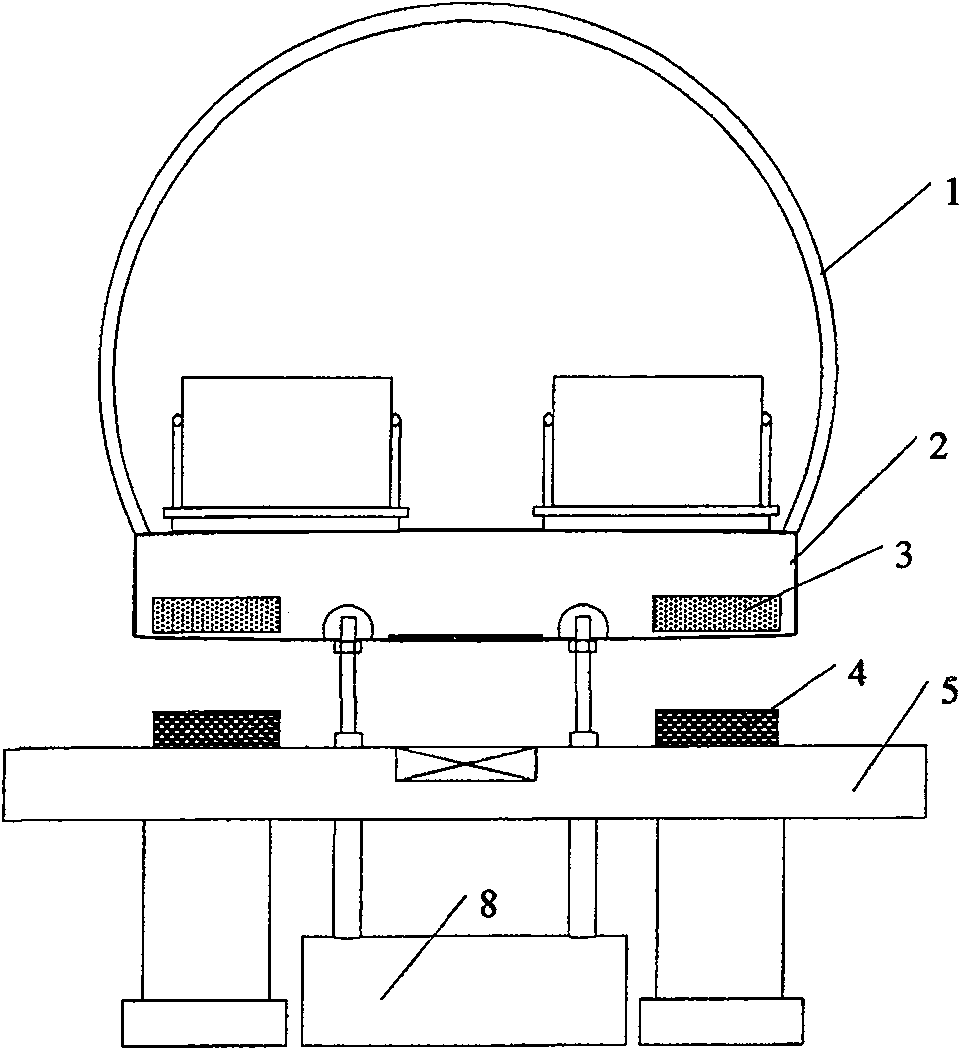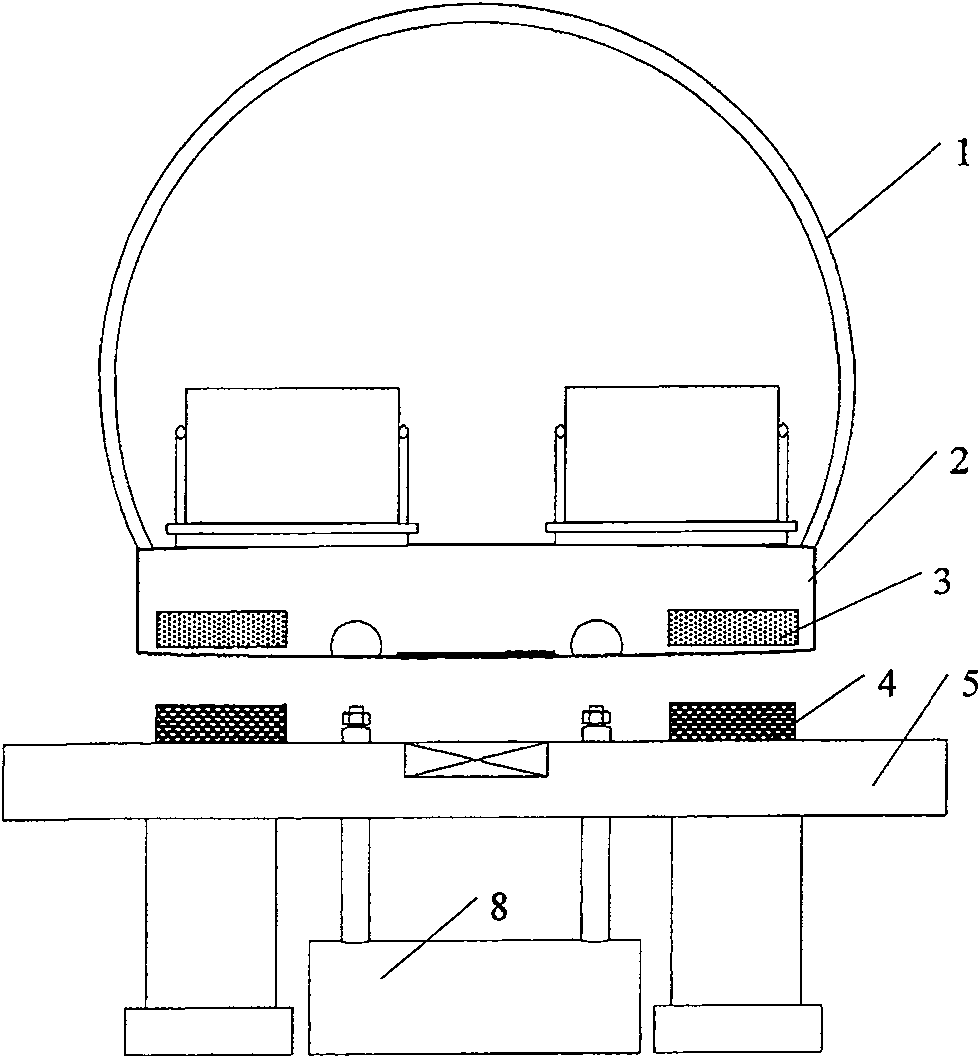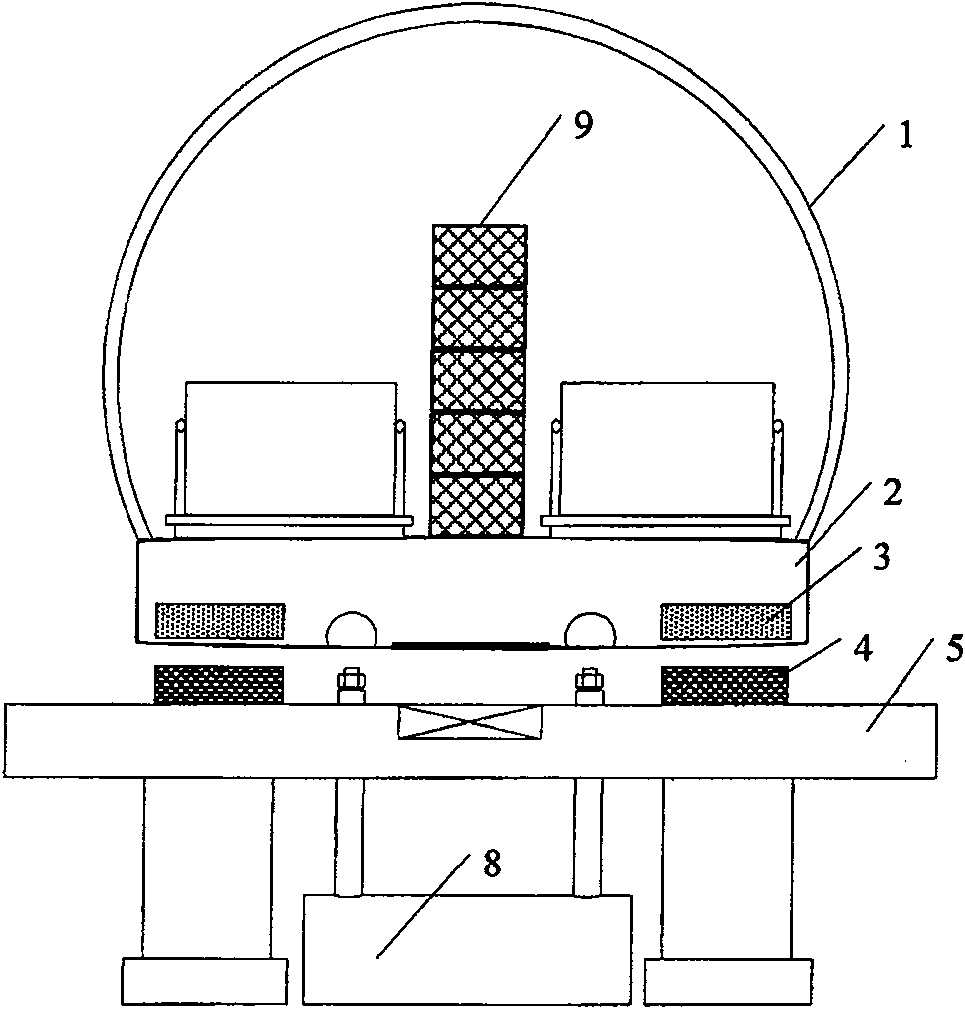Method for improving stability of high temperature superconducting magnetic suspension system
A system stability and high-temperature superconducting technology, which is applied in the field of improving the stability of high-temperature superconducting magnetic levitation systems, can solve the problems of high cost, complicated implementation process, and limited room for improvement of stability, and achieves wide application and simple operation. Effect
- Summary
- Abstract
- Description
- Claims
- Application Information
AI Technical Summary
Problems solved by technology
Method used
Image
Examples
Embodiment 1
[0027] A kind of embodiment of the present invention is: a kind of method that improves the stability of high-temperature superconducting magnetic levitation system, and its concrete practice is: A, field cooling: by supporting system 8, the suspension body of high-temperature superconducting magnetic levitation system is supported on the set Set the position, and then start the refrigeration equipment, so that the superconducting block material enters the superconducting state; B. Release the support: the support system releases the support for the suspension, so that the suspension is in a stable suspension state under no load; C. Loading: for the suspension Apply external force to the body to make it in a stable suspension state under the external force load; D. Release the load: release the applied external force, and the suspension body is in a stable suspension state again, and this state is used as the initial state of the high-temperature superconducting magnetic levitat...
Embodiment 2
[0037] This example is basically the same as the first example, except that the operation of loading and releasing the load (heavy object) is repeated once. The following table shows the dynamic stiffness and damping coefficient of the high-temperature superconducting maglev system that only loads and releases the load once after the secondary loading and releasing the load in this example, and it can be seen from the following table that after the secondary loading, Its dynamic stiffness and damping coefficient are further improved compared with only one loading, which are 100.3% and 39.77% higher than that of one loading respectively.
[0038]
Embodiment 3
[0040] Figure 5 It is shown that this example is basically the same as the first example, the only difference is that the loading method adopts hydraulic loading, and its specific method is: use the hydraulic pump 8 in the support system to lift the pillar, and pass the bolt, which can also be a bolt A class of fixing devices such as the HTS maglev car body 1 and the hydraulic pump 8 pillars are connected as one. The hydraulic pump 8 exerts force to forcibly lower the car body 1 to a lower position, so as to achieve the purpose of applying external force to the car body in a hydraulic manner, and keep it in a stable state under the external force load. When releasing the load, just remove the fixing devices such as bolts or bolts.
[0041] When the present invention is implemented, the loading of the C step and the release loading of the D step are generally repeated 1-3 times, and the effect is better. Of course, it can be repeated more times, but the effect of more than f...
PUM
 Login to View More
Login to View More Abstract
Description
Claims
Application Information
 Login to View More
Login to View More - R&D
- Intellectual Property
- Life Sciences
- Materials
- Tech Scout
- Unparalleled Data Quality
- Higher Quality Content
- 60% Fewer Hallucinations
Browse by: Latest US Patents, China's latest patents, Technical Efficacy Thesaurus, Application Domain, Technology Topic, Popular Technical Reports.
© 2025 PatSnap. All rights reserved.Legal|Privacy policy|Modern Slavery Act Transparency Statement|Sitemap|About US| Contact US: help@patsnap.com



